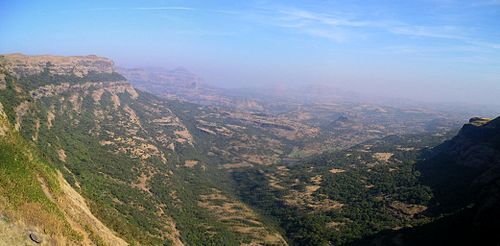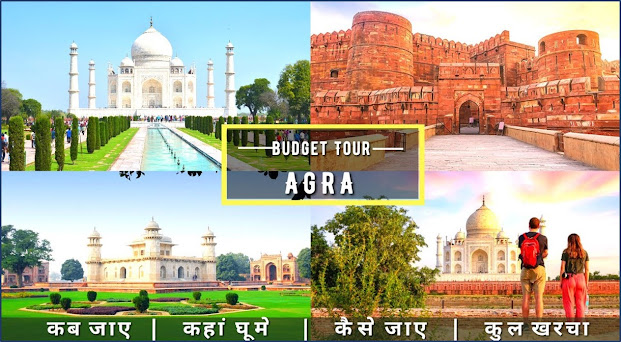Shree Bijasan Mata Mandir is a Hindu temple located in Madhya Pradesh, India. It is dedicated to Bijasan Mata, who is considered as a form of Goddess Durga. The temple is situated atop a hill in Bijasan village, which is around 10 kilometers from Indore city.
The temple complex comprises of
the main shrine of Bijasan Mata, along with several other smaller shrines
dedicated to various deities. The temple is surrounded by lush greenery and
offers a panoramic view of the surrounding areas.
The temple is visited by many devotees, especially during the Navratri festival, which is dedicated to the worship of the nine forms of Goddess Durga.
Legend has it that the temple was
built by a saint named Shri Bhagwan das Maharaj in the 16th century. The legend
also states that the saint had a vision of the goddess, who instructed him to
build a temple at the spot where he saw her.
The temple has since then become
a popular pilgrimage site for devotees who seek blessings from the goddess.
👇👇Also Must Read:👇👇
👉👉 Snow city Indore! Madhya Pradesh Indore 👈👈
Bada
Ganpati is a famous Hindu temple dedicated to Lord Ganesha located in
Indore, Madhya Pradesh, India. The temple is situated in the heart of the city,
and is one of the most visited and revered religious sites in Indore.
The temple is known for its
massive idol of Lord Ganesha, which is believed to be the largest in the world.
The idol is made of a single piece of stone and is over 25 feet tall, and 20
feet wide, with its forehead alone measuring around 10 feet. The temple complex
also has smaller shrines dedicated to other deities, including Lord Shiva,
Goddess Parvati, Lord Hanuman, and Lord Krishna.
According to legends, the idol of Bada Ganpati was found during excavations in the 17th century, and was installed in a makeshift temple by the then ruler of Indore, Rani Ahilyabai Holkar. The temple was later renovated and expanded by various rulers and devotees over the years.
The temple is visited by many
devotees throughout the year, especially during the festival of Ganesh
Chaturthi, which is dedicated to Lord Ganesha. The festival is celebrated with
great enthusiasm and devotion, with devotees offering prayers and sweets to the
deity. The temple is also known for its unique architecture, which combines
traditional Hindu and Islamic styles.
👇👇 Also Must Read:👇👇
👉👉Ujjain Mahakal Tourist Places 👈✌
Lal
Palace is a historical palace located in Indore, Madhya Pradesh, India.
It was built in the early 20th century by Maharaja Shivaji Rao Holkar, who was
the ruler of Indore at the time.
The palace is an architectural
masterpiece, and is known for its intricate carvings, exquisite paintings, and
stunning frescoes. It is built in a blend of European and Indian architectural
styles, with a unique blend of Gothic, Victorian, and Maratha styles.
The palace has several grand halls, each with its unique decor and design, including a Durbar Hall, a Ballroom, and a Drawing Room.
The Lal Palace was once the
residence of the Holkar royal family, and it served as the venue for various
royal ceremonies and events. After India gained independence, the palace was
converted into a state museum, showcasing the art, culture, and history of the
region.
The museum exhibits a vast
collection of ancient artifacts, including sculptures, paintings, manuscripts,
and weapons.
The palace is a must-visit for
history and art lovers, as it provides a glimpse into the rich cultural
heritage of Indore and the surrounding region. The Lal Palace is also a popular
destination for tourists, who come to admire its grandeur and beauty.
Navagraha Temple located in
Indore, Madhya Pradesh, India. The temple is dedicated to the nine celestial
bodies or Navagrahas of Hindu astrology, namely Surya (Sun), Chandra (Moon),
Mangal (Mars), Budh (Mercury), Guru (Jupiter), Shukra (Venus), Shani (Saturn),
Rahu (North Lunar Node) and Ketu (South Lunar Node).
The Navagraha Temple in Indore is
in the vicinity of the Rajwada Palace and is a popular pilgrimage site for
believers of Hindu astrology. The temple architecture is based on the ancient
Vedic principles and has statues of all the nine planets placed in a circular
manner.
Each planet is believed to have a specific influence on human lives, and worshippers come to the temple to seek blessings and remedies for any astrological afflictions they may be facing.
The temple is open for visitors
throughout the year, and especially during the Navagraha festivals such as
Surya Grahan (Solar Eclipse) and Chandra Grahan (Lunar Eclipse), special rituals
are performed to appease the planetary deities.
👇👇Also Must Read: 👇👇
👉👉Ujjain Tourist Places-उज्जैन महाकाल 👈👈
Chhappan
Dukan (which means "56 Shops" in Hindi) is a popular food
street located in Indore, Madhya Pradesh, India. It is a street that is lined
with a total of 56 food stalls and restaurants that offer a variety of
vegetarian and non-vegetarian snacks, chaat, sweets, and other local
delicacies.
Chhappan Dukan is located in the New Palasia area of Indore and has been a popular food destination for locals and tourists alike for many years. The food stalls and restaurants here offer a range of options such as Poha, Bhutte ki Kees, Dabeli, Jalebi, Falooda, Kulfi, Sandwiches, Dosas, and many more.
The street comes alive in the
evenings with the aroma of freshly cooked food, and the hustle and bustle of people
enjoying their meals. It is a must-visit destination for food lovers in Indore
and is known for its unique food culture and culinary experiences.
ISKCON
(International Society for Krishna Consciousness) has a temple in Indore,
Madhya Pradesh, India. The temple is located on Khandwa Road in the city, and
it is known as Sri Sri Radha Govind Mandir.
The temple complex is spread over
a large area and includes a beautiful shrine dedicated to Lord Krishna and
Radha, along with several other deities. The temple is designed in a
traditional Indian architecture style and has intricate carvings and beautiful
paintings on its walls.
The ISKCON temple in Indore conducts regular devotional programs such as Bhagavad Gita discourses, kirtans, aratis, and other spiritual activities. The temple also offers prasadam (sanctified food) to its devotees and visitors.
The temple attracts a large number of devotees and visitors, especially during festivals like Janmashtami (the birth anniversary of Lord Krishna), Radhashtami (the birth anniversary of Radha), and other important Hindu festivals. The temple also runs various social welfare programs and provides educational and medical services to the local community. Indore Zoo:-
👇👇Also Must Read: 👇👇
👀👀Shivaji Raje Fort In Maharashtra 👈👈
Indore Zoo, also known as Kamla
Nehru Prani Sangrahalaya, is a zoological park located in Indore, Madhya
Pradesh, India. The zoo was established in 1974 and covers an area of about 51
acres.
The zoo houses a variety of
animals, including tigers, lions, leopards, elephants, crocodiles, and many
species of birds, reptiles, and mammals. The park also has a small aquarium
that showcases a variety of fish species.
In addition to providing a home for these animals, the zoo also serves as an educational center and research facility. It offers educational programs for visitors and school groups, as well as conducts research on animal behavior, conservation, and breeding programs.
However, it's important to note
that zoos have been criticized for their treatment of animals and the impact of
captivity on their physical and psychological well-being. It's important to
consider these issues when visiting and supporting zoos.
👇👇Also Must Read: 👇👇
👉👉MAHARASHTRA FORT INFORMATION 👈👈
👀👀FAQ: 👇👇
What are the top attractions to visit in Indore?





























.jpeg)


.jpeg)





